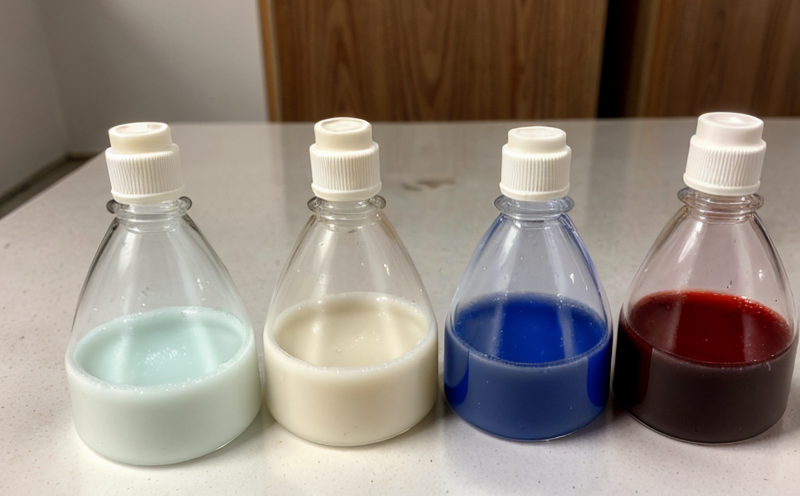BS EN 1186 Monomer Migration Testing in Packaging
The BS EN 1186 standard is a critical reference for ensuring the safety and compliance of packaging materials used in contact with food. This monomer migration testing ensures that no harmful substances, particularly from monomers present in polymers or oligomers, migrate into food products during storage or use. This service focuses on the specific requirements laid out by BS EN 1186, which are designed to prevent potential health risks associated with the leaching of monomers and other chemicals.
The testing procedure is particularly important for plastic packaging materials, such as those used in containers, bottles, and lids that come into direct contact with food. These materials often contain monomers or oligomers, which can migrate under certain conditions. The standard aims to ensure these substances do not pose a health risk by setting limits on the amount of migration permissible.
The testing process involves placing the packaging material in a specific solution, simulating real-world storage conditions. After exposure, the sample is analyzed for monomer and oligomer content using chromatographic techniques or other analytical methods. The results are compared against the specified limits set by BS EN 1186 to determine compliance.
The importance of this testing cannot be overstated. Compliance with this standard can significantly reduce the risk of food contamination, ensuring that products meet both national and international safety regulations. This is especially important in industries where trace amounts of contaminants could lead to widespread recalls or public health concerns.
In summary, BS EN 1186 monomer migration testing is a vital step in maintaining high standards of product safety and compliance with regulatory requirements. By adhering to this standard, companies can ensure that their packaging materials do not contribute harmful substances to food products, thereby protecting consumer health.
Applied Standards
The primary standard used for this testing is the BS EN 1186-1, which provides detailed guidance on how to conduct monomer migration tests. This standard specifies the types of packaging materials that should be tested, the solutions in which they are immersed, and the conditions under which these tests must be conducted.
- EN 1186-1:2009 specifies the procedure for determining the migration of monomers from plastic materials into food contact articles (FCAs) used to store or contain food.
The standard also references other relevant international standards such as ISO and ASTM, which provide additional context and supplementary information. These include ISO 10350-9:2004 for the determination of monomer migration from polyvinyl chloride (PVC) materials into food contact articles and ASTM D886-17 for the procedure to determine the migration of plasticizers, solvents, or other added chemicals.
By adhering to these standards, laboratories can ensure that their testing methods are consistent with global best practices. This not only enhances the reliability of test results but also ensures that companies remain compliant with international regulations.
Scope and Methodology
The scope of BS EN 1186 monomer migration testing is broad, covering a variety of packaging materials and conditions. This service primarily targets polymeric materials such as PVC, polystyrene (PS), polyethylene terephthalate (PET), and others that may contain monomers or oligomers which could potentially migrate into food during storage.
The methodology involves several key steps:
- Sample Preparation: The packaging material is cut to a standard size, ensuring that each sample is consistent in dimensions. This ensures uniformity and repeatability of the test results.
- Solution Immersion: The prepared samples are immersed in a specified food simulant solution, such as 3% acetic acid or water, depending on the material type. This simulates real-world conditions under which the packaging might be used.
- Exposure Time: Samples are exposed to the solution for a defined period, typically up to 24 hours, during which time the potential migration of monomers and oligomers is monitored.
- Analytical Testing: After exposure, the samples are analyzed using chromatographic techniques or other appropriate analytical methods. This step identifies any monomer or oligomer that has migrated into the solution.
- Evaluation: The results of the analysis are compared against the specified limits set by BS EN 1186 to determine compliance with the standard.
This comprehensive approach ensures that all relevant factors are considered, providing a robust assessment of potential risks associated with monomer migration. By following these detailed steps, laboratories can provide accurate and reliable test results that meet both regulatory requirements and industry standards.
Environmental and Sustainability Contributions
The importance of sustainability in the packaging industry cannot be overstated. BS EN 1186 monomer migration testing plays a crucial role in promoting sustainable practices by ensuring that materials used do not contribute to harmful environmental impacts. By preventing the release of monomers or oligomers into food, this testing helps reduce waste and contamination, contributing positively to environmental stewardship.
- Reduction in Hazardous Waste: Ensuring that packaging does not leach harmful substances minimizes the risk of waste entering the environment. This reduces the need for extensive clean-up efforts and helps protect ecosystems.
- Enhanced Recycling Potential: By ensuring that materials are safe to be recycled, this testing supports a circular economy model, reducing the overall environmental footprint.
- Eco-Friendly Alternatives: The insights gained from this testing can lead to the development of safer and more environmentally friendly packaging alternatives.
In conclusion, BS EN 1186 monomer migration testing is not just about compliance; it's a step towards creating a more sustainable future by ensuring that our actions do not inadvertently harm the environment. By adhering to this standard, companies can contribute to broader sustainability goals while maintaining high standards of product safety.





